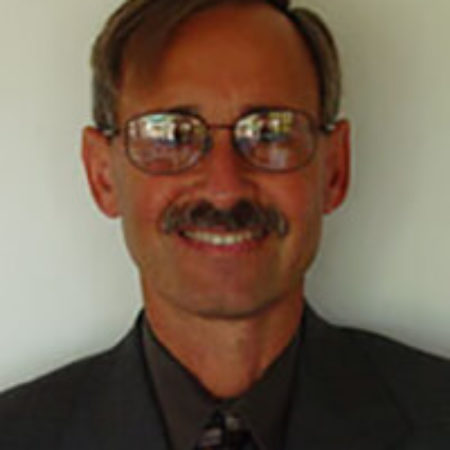While watching David Letterman deliver his nightly top 10 list — to the usual delight of his audience — I began to think about a similar list that might be valuable to in-house cleaners and managers.
Inspiration hits
Since 1992, I have had the pleasure of working for the California Association of Business School Officials (CASBO) organization as its custodial trainer.
More than 8,000 custodians have attended these and similar seminars, and I have collected dozens and dozens of concerns, issues and requests from participants.
Given this, the ongoing budget crisis, and the resulting reduction of custodial staffs, a top 10 list of custodial woes may prove useful in increasing efficiency and employee satisfaction, while reducing costly turnover.
No. 10 — Permanent markers on whiteboards do not make custodians happy
One of the major frustrations of cleaning staffs is the extra time that must be invested when a facility occupant fails to use common sense.
In fact, many custodians suggest that teachers hide permanent markers so they do not use them on the whiteboards.
When a permanent marker is used to write on a whiteboard, and the markings remain on the surface for several hours, the custodian must then locate and utilize a special solvent to remove the ink.
Markers designed for use on whiteboards often look similar to the permanent markers; to avoid having permanent markers mixed in with whiteboard markers (a recipe for disaster), suggest to your facility occupants that they keep permanent markers in a special box away from whiteboards.
No. 9 — Less is more: Leave your junk at home
Adopt a policy whereby teachers and staff are not allowed to bring so much junk (i.e. furniture, appliances, etc.) into the schools.
Amazingly, in addition to traditional furniture — desks, tables, computers, monitors, sinks, waste bins, carpets — many classrooms are cluttered with old couches, coffee makers, microwaves, popcorn poppers, or personal refrigerators.
If an organization has adopted an energy policy program, personal appliances are often prohibited — except in a central location, such as a staff room or workroom.
Additional clutter, such as the aforementioned items, will automatically impede the custodian from completing the prescribed cleaning assignments.
No. 8 — Banish the bathroom Picassos
Teach proper bathroom etiquette so there are fewer “restroom vandals”, as restrooms are traditionally the favorite complaint area.
Not surprisingly, facilities” restrooms often receive the least amount of supervision. Some students believe the restroom is the place for a quick smoke, toilet paper art, or other inappropriate behavior.
A possible solution to avoid hours spent cleaning graffiti off of restroom stalls? At San Francisco State University, the Humanities Building has 24 sets of restrooms.
Each stall has a small chalkboard installed for those folks who need to “express themselves”.
No. 7 — It”s your party — but we have to clean it up!
Distribute “party kits” to teachers, including disposable table cloths, paper towels, and a reminder to notify the custodian if there is a spill or accident.
Pizza sauce on carpet is particularly annoying to remove (grease, oil, sugar, etc.), yet by providing a teacher/classroom with “immediate response” tools, less damage will occur from parties and other “food/drink” events held in classrooms. (Even when my in-laws visit, we locate old plastic table cloths and cover our coffee table and two end tables, just in case.)
“Day” custodians should also be more alert on party days and anticipate spills and other accidents that can occur during celebrations.
No. 6 — All that glitters is usually gooey and difficult to clean
The magic “G” items — glue, glitter, gum, grease, grime — all require special spot removal procedures that are often labor intensive.
When using “artsy” products, instruct building occupants to conduct the art projects outside the classroom or put a protective surface over the carpet or floor.
Simple placement of a plastic tarp or butcher paper over the surface can prevent damage from occurring.
Ideally, using these items outside the classroom provides the best prevention, but sacrificial surfaces will offer an extra layer of protection.
No. 5 — The terror of tape (and removing it from surfaces)
Removing sticky and dirt-attracting residue requires aggressive chemicals and very labor-intensive procedures.
Eliminate scotch, masking and duct tape as much as possible from the facility.
Alternative methods to display student work and mandated information signs include thumb tacks, clips, staples, push pins, Velcro, etc.
Several organizations have adopted a “no tape policy” or substitute tape with painter”s tape that will dry within a few days without leaving a gummy residue.
No. 4 — Have reserves at the ready when custodians ”time-out”
When a custodian is absent (due to vacation, illness, personal necessity, etc.), a substitute should be arranged.
Shifting the workload to the remaining custodian(s) is unfair, and sends the wrong message about cleaning.
Most in-house cleaning operations still utilize routes as a means of assigning work, so when one custodian is absent, another must do double-duty, and consequently, service levels deteriorate.
One of the more convincing arguments for Team Cleaning® is that one custodian”s absenteeism has less impact than under the route system.
No. 3 — It’s YOUR building too, you know!
Facility usage should not be supported at the expense of cleaning. Hold the facility occupants and/or various groups who may use the facility accountable for its appearance and cleanliness.
The public is allowed to use many educational facilities for various functions, such as: Adult learning, dancing, scouting, clogging, basket weaving, etc.
While there is nothing wrong with this facility usage, the customer should be accountable for cleaning up when they have finished.
Too often, a custodian not only has to return and clean the area a second time, but also may be interrupted with special requests that disrupt the cleaning program.
No. 2 — The facility is not a buffet
Confine or limit where food and drink may be consumed on a campus.
Food and drink in classrooms (at any educational institution) ranks high on the list of custodial complaints.
Often the vending machine is located below the “No Eating and Drinking in Classroom” sign.
If students must be allowed their snacks while in class, then instruct facility occupants to clean up after themselves, rather than inundate the classroom with extra debris.
At very clean facilities, we find compliance with the food and sign restrictions. In turn, it is easier to clean and enforce policies in these institutions.
No. 1 — We’d get by better with a little help from our administrative friends
Ask administrators to enforce district and site policies, whether it is “No Food and Drink”, energy conservation, recycling efforts, room security, no gum chewing, etc.
Enforcement of policies by chief administrators sends a very powerful message.
When I administer cleaning workshops, the most frequent question I hear is, “Where are the administrators”?
Since many administrators do not attend cleaning seminars (with very few exceptions), cleaning managers should alert them as to the potential problems that could be averted with proper planning and regular conversation with the cleaning staff.
A clean facility has tremendous benefits, such as health, safety, appearance, better academic performance, higher attendance, longer surface life, more cooperation and pride, and a host of other tangible benefits.
When custodians experience “customer cooperation”, they are more motivated and delighted to clean the facility.
Perry S. Shimanoff is the founder of Management and Communication Consultants (MC2), San Carlos, CA. Since 1979, MC2 has worked with school districts and community colleges by conducting cleaning audits, staffing analyses, hands-on workshops, and other maintenance- and operations-related services.



